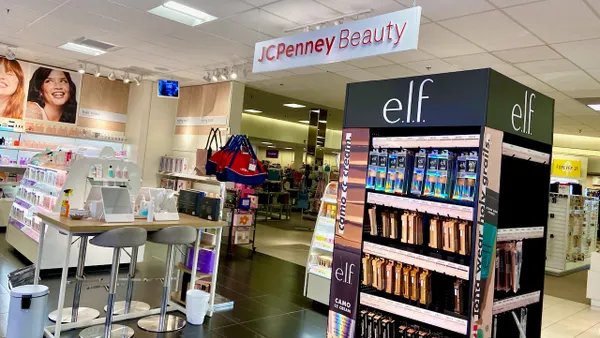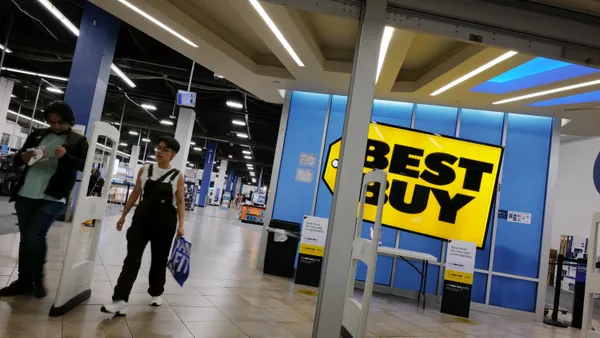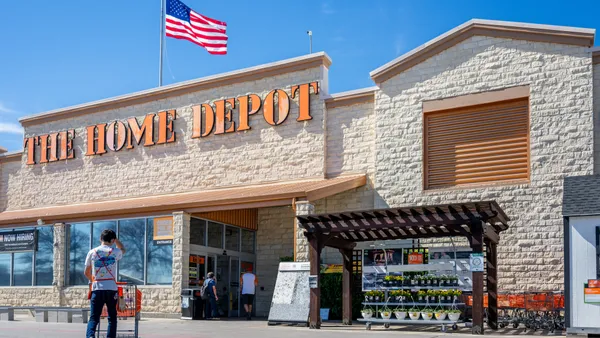Dive Brief:
- Some suppliers to Sears Holdings have stopped shipments or pushed for more favorable terms, according to a report from Reuters. The departures and demands from suppliers come as the store retailer’s risk of default has made it harder for vendors to get insurance on orders to the company. A Sears spokesman told Retail Dive in an email that "providers of insurance have never had to pay a claim to any vendor tied to SHC’s business." He added that the company has met its obligations to suppliers, reduced financial risk and continues "to work to manage our vendor relationships in a constructive manner."
- Two unnamed small suppliers told Reuters that they stopped shipping to Sears this year, as their insurance — known as accounts receivable puts — became unaffordable after the retailer issued a going concern warning earlier this year. Another vendor, the wholesaler United National Consumer Suppliers, has begun shipping to Sears but on the condition that Sears pay within 30 days, according to Reuters.
- Earlier this year, Sears and its CEO engaged in a series of public tussles with suppliers for its Craftsman brand (which it sold to Black and Decker but can still source independently for its own stores). In March, following the going concern warning, some media reported that Sears vendors had begun scaling back deliveries and were demanding better payment terms.
Dive Insight:
Beware the supplier squeeze. It can both predict and hasten bankruptcy.
As one example, early in the year children’s apparel retailer Gymboree, which filed for bankruptcy in early June, faced vendors pushing for stricter terms on shipments, including demands for upfront payments and refusals to extend normal credit. In a filing, a representative for Gymboree said these issues began after news of its CEO’s departure and amid speculation of financial stress. The suppliers’ demands put additional liquidity stress on the company in the months leading up to the retailer’s default on an interest payment and Chapter 11 filing.
For retailers with balance sheet issues, Sears among them, a rash of skittish suppliers demanding better terms and earlier payments can create a vicious cycle that hastens bankruptcy. "Weakening vendor relations are definitely a step toward a restructuring process," David Silverman, senior director for retail coverage at Fitch Ratings, said of Sears in an interview with Retail Dive earlier this summer.
"Tighter terms from vendors with regard to payment, and frustrations with regard to store closures and negative comp sales, would cause the vendors’ sales and profits to be impacted," Silverman said. "Strained quantitative and qualitative relations, if you will, between retailers and vendors are a step along the path [toward bankruptcy]."
Sears has made some headway in taking stress of its books. Earlier this year it finally eked out a positive profit after months of cost cutting and asset sales and two years of reporting quarterly earnings losses. The company followed that up last week with another loss, though smaller than the year-ago period, and a steep decline in both total and same-store sales.
Philip Emma, a retail analyst at Debtwire, described Sears’ earnings improvement in an interview as a matter of "magnitude" compared to past losses, and one that stemmed from asset sales, cost cuts and financial engineering rather than a business turnaround. "But they’re still fundamentally losing money," he said.
In addition to relatively better profit numbers, Sears has recently partnered with Amazon and others to sell Kenmore products, and has also opened new concept stores. But there’s no guarantee those efforts will have a meaningful impact on the retailer’s sales.













